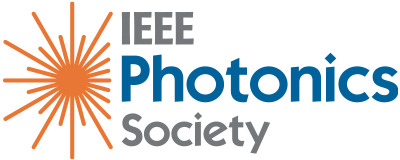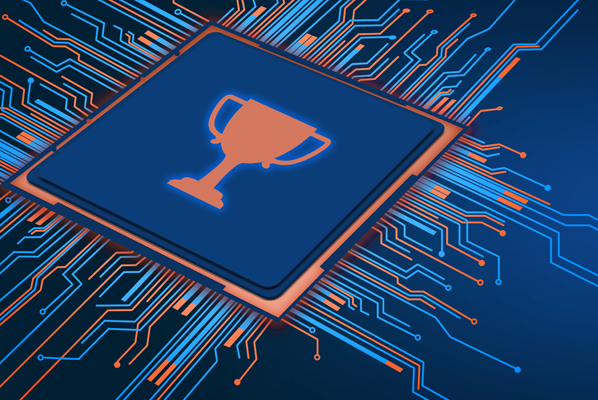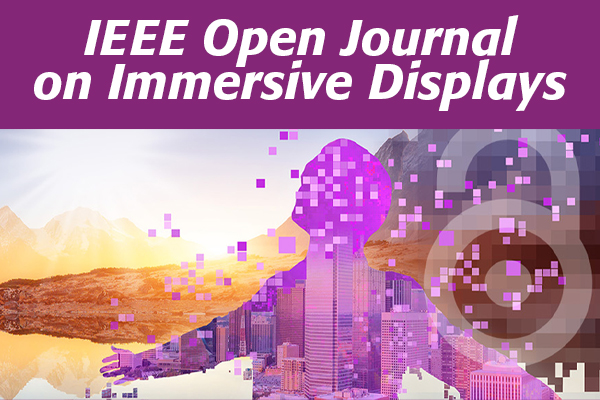Q&A with new Associate Vice-President of Women in Photonics on her plans to address gender gap disparities in the photonics community.

The IEEE Women in Photonics initiative was created to promote activities that support the participation, engagement, and advancement of women in the photonics and optics community. In partnership with the IEEE’s parent Women in Engineering program, the Society organizes various professional development and technical events, such as tech talks, soft skill seminars, summer schools, networking mixers, K-12 outreach, chapter workshops, meet-ups and online events. Together the hope is to inspire girls and women around the world to follow their academic interests and scientific, professional pursuits. The IEEE Photonics Society also recognizes that diversity and inclusion are essential to innovation. In turn, the IEEE Women in Photonics initiative seeks to diversify the range of individuals, allies and perspectives building the technology and information of tomorrow, for all.
As the IEEE Women in Photonics program enters its eighth year, a new Associate Vice President (AVP), Professor, Deepa Venkitesh from the Department of Electrical Engineering at Indian Institute of Technology Madras (IIT), has been appointed to steer the continued development of programs directed towards the advancement of women. Her scientific interests include Photonic Signal Processing for High Capacity Optical Communication, Microwave Photonics, Narrow Line and High Power Fiber Lasers. However, she will strive to advocate for all women seeking to excel in their respective scientific areas of interest.
To learn more about Venkitesh’s drive to support youth in STEM and her plans to address gender disparities in the photonics community, a short Q&A overview is below.
More on the IEEE Women in Photonics’ long-term campaigns and volunteer opportunities during her tenure will come in future newsletter issues throughout this year and next.
As the Associate Vice President for the IEEE Women in Photonics program, what are some specific goals you’d like to accomplish within your role?
At the outset, I am thankful to those who trusted me with this leadership position. I wish to keep my goals simple, pragmatic, and sustainable. The following are the three areas that I would like to initially focus on, during my tenure:
Reignite: Back to Career (BTC) Initiative—IEEE Women in Photonics plans to roll-out a targeted initiative to strategically reach and better support women and gender minorities who are returning or transitioning to photonics and optics fields. It will include mentorship pairings, soft-skills trainings grants to support individualized project goals and onboard learning.
Across the globe, the scientific community has seen many women discontinuing their jobs/ R&D positions – both in academia and industry. These are mostly due to their life and cultural commitments—family, relocation, childcare, caregiving, and so on. After a break of more than two years, their confidence levels tend to spiral down and getting back into research environment becomes much harder. Isolation from the scientific community, lack of mentorship, ever-evolving requirements from industries, rapid shifts in the skill-set needs, competitiveness in the tech space—all compound to a reluctance to join back to a career commensurate with their abilities. This comes at a cost and detriment to the knowledge domain and scientific community in general, as the loss of trained and talented women
greatly contributes to the ‘leaky pipeline’ and lack of diverse, social, and technological advancements in the field.
The BTC initiative seeks to: (a) Proactively identify women and gender minorities who wish to transition back into the photonics and optics community, i.e. both within academia and industry, after a prolonged break. This will be done through concentrated outreach efforts, such as assessing retention information, supporting localized chapter recruitment activities to better understand global circumstances/needs, addressing university teaching faculty (those who are not involved in research), and through working closely with diversity partners; (b) Expose participants to new career possibilities and provide mentoring services through a mentor/mentee match, in-person at conferences and online; (c) Offer seed grants for continuing education trainings, financial hardships during transitions, onboarding support, individualized project goals, etc.; (e) Sensitize senior professionals and employers towards understanding and accepting professionals returning to the work place often with gaps in a resume. Constructive trainings and interpersonal sessions for hiring management will be offered.

Strengthen the “Introduce a Girl to Photonics” Program—High school and pre-university students are not typically exposed to the word Photonics’, let alone the infinite possibilities of the subject and its impact in different domains. Awareness about the subject could greatly change the perspectives young women and girls have towards pursuing STEM in general. With the help of chapters and devising strategic grassroots drives, the IEEE Women in Photonics program intends to inspire young minds to cultivate interests in light-based sciences as well as dedicate resources and funding towards STEM Outreach each year.
Volunteers will be encouraged to coordinate K-12 STEM activities to show how photonics impacts the daily lives of all
around the world. In conjunction, successful and diverse women members will also be recruited to regularly serve as role models, share journey stories, and guide curriculum development to inspire and motivate the next generation of women in photonics.
Encourage More Women Participation in Conferences—Alongside the Society’s Professional Advancement Committee, a Working Group is being formed to address gender balance disparities within conferences. The group plans to create accountability guidelines for conference leaders to follow and enforce within sub-committees to better support diverse recruitment and gender balance of keynote speakers, invited talks, posters, tutorials, and more.
A proposed first accountability project is: Creating an active recruitment database of women and gender minorities willing to serve within their expert areas and/or specific areas of scientific interest. The Society would actively make this vetted database available to General Chairs and Technical program committee leaders, in order to expand diverse programs, representation and accessibility to talent. This database could also support Editors of prominent journals when recruiting Associate Editors and contributors for editorial teams.
Why Photonics? What sparked your interest? Can you describe the moment you realized this was a field you’d like
to pursue?
I don’t think I can identify a specific “Aha” moment where I decided that I would pursue Photonics. It might sound clichéd, but Optics always fascinated me because one can “see” and thus get a firsthand experience of most of what is taught in a first course. I must say, the teacher who taught Physics in high school had a very big role to play in deciding the choices I would make later. This is one of the reasons why I am passionate about investing more resources and time into growing the “Introduce a Girl to Photonics” and STEM programs.
I had pursued Physics and Maths during my undergrad and master’s degree programs. Considering the innumerable opportunities that Photonics opened in the engineering world, my focus is on the interesting engineering applications of light manipulations since my early career. I am of course still learning and continually amazed at the infinite possibilities that light has to offer!
What about the IEEE Photonics Society’s Mission and the work of the Diversity Oversight Committee really motivates you? Why do you volunteer?
IEEE Photonics Society has been initiating a lot of proactive programs that are specifically targeted to instill and celebrate diversity in the community. The volunteers involved in these activities, their passions for change and their commitment to the cause is addictive. I also think of this as a wonderful opportunity I have been given, AVP of Women in Photonics, as a way to represent the Indian perspective. I am considering ways I can increase the number of Photonics based research activities throughout in India, in addition to my global work.

Why do you think it is important to cultivate scientific curiosity in young girls early?
I feel it is important to ignite scientific curiosity in all young children in their crucial stage of cognitive development. Rather than rote learning, inculcating scientific curiosity by encouraging them to ask questions in an early age would make them better thinkers and better problem solvers. Science does not favor gender, but somehow the women representation in STEM gradually tapers down when children grow. Several factors contribute to this, which could get complicated to analyze. In communities and cultures where gender bias is ingrained in the social structure for various reasons, it is much harder for young women to imagine or dream of themselves in STEM careers.
It is the Society’s hope to offer programs and options where collectively, we as a community can eliminate barriers of entry and change mindsets. Allow young women and girls interested in STEM to pursue and do what they enjoy the most. My pursuits will be focused on offering more experiential learning opportunities, which is a crucial factor in fostering scientific interest. Successes in small experiments give a sense of accomplishment and can inculcate confidence in young girls. I am tempted to quote Gandhiji here, “If you educate a man you educate an individual, but if you educate a woman you educate an entire family”, and hence society.





